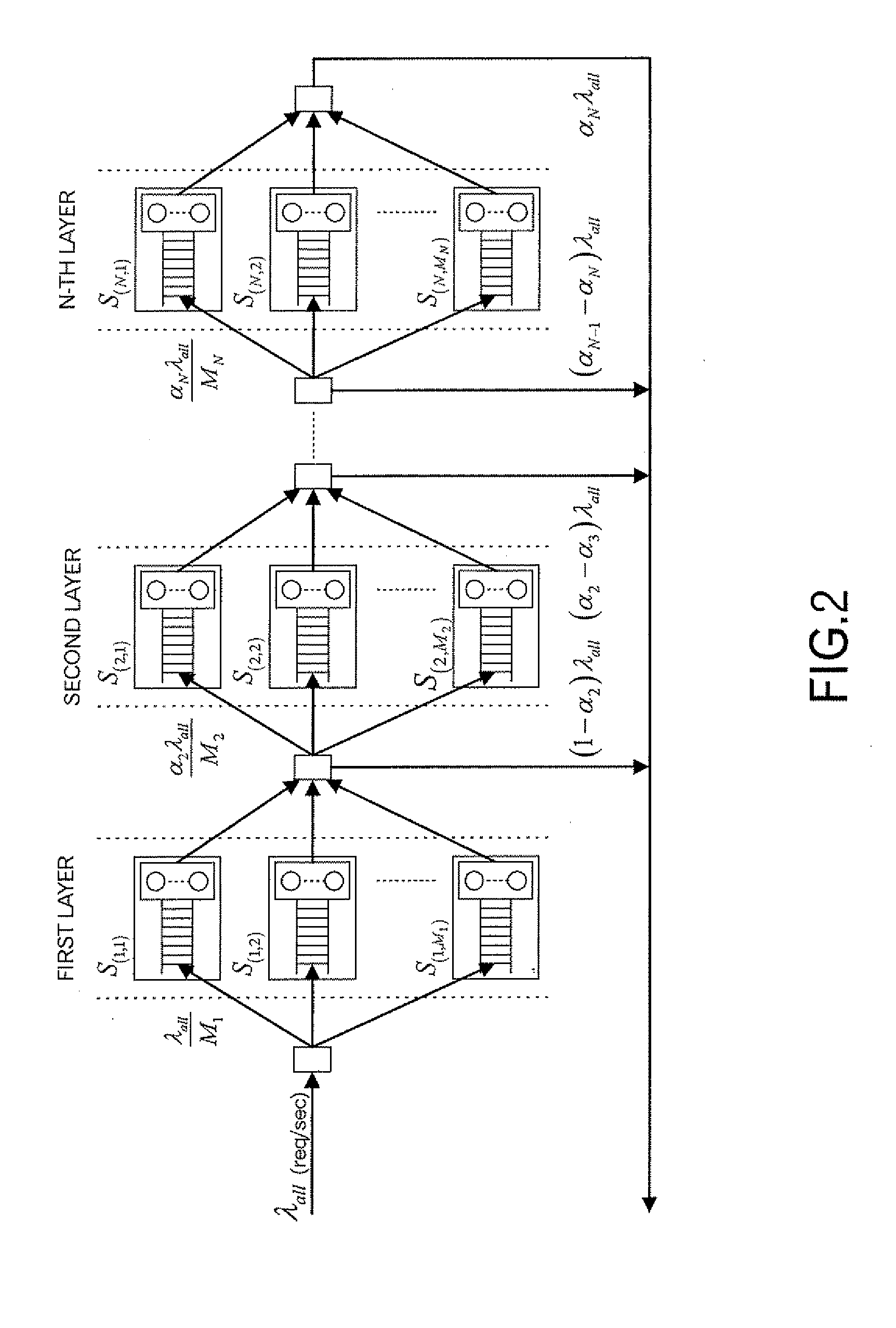Analysis method and apparatus
a technology of analysis method and apparatus, applied in the field of analysis technique for responses, can solve the problems of difficult introduction of this function, difficult to grasp the influence of the utilization state of the resources of each server on the response of the user, and complicated system to provide the servi
- Summary
- Abstract
- Description
- Claims
- Application Information
AI Technical Summary
Benefits of technology
Problems solved by technology
Method used
Image
Examples
Embodiment Construction
[Principle of this Invention]
A. Derivation of a Theoretical Value Xˆ (a Symbol That ˆ is Attached on the Top of X is Also Indicated as “Xˆ”) of an Average Delay Time in a Web System Model
A-1. Modeling of the Delay Time of a Single Server
[0041] First, by using FIG. 1, it is considered that the average delay time in the single server S having plural CPUs is derived. The server S shown in FIG. 1 has C CPUs from CPU_1 to CPU_C, and requests input from the outside at the request frequency λ (req / sec) are input into a queue Sw and then processed by C CPUs. At this time, the utilization ratio of the CPU is represented as ρ(%). Then, from an analysis result of the M / M / s queue mode, an average stay time T (C, λ, ρ) is as follows: T(C,λ,ρ)=F(C,λ,ρ) G(C,ρ)(1)F(C,λ,ρ)=C ρλ(2)G(C,ρ)=(C(1-ρCCρCC! ∑r=0C-1Crρri!+1)(1-ρ))-1+1(3)
[0042] From the expressions (1) to (3), the average stay time T(C, λ, ρ) in the server S satisfies the following relation. Incidentally, α represents a...
PUM
 Login to View More
Login to View More Abstract
Description
Claims
Application Information
 Login to View More
Login to View More - R&D
- Intellectual Property
- Life Sciences
- Materials
- Tech Scout
- Unparalleled Data Quality
- Higher Quality Content
- 60% Fewer Hallucinations
Browse by: Latest US Patents, China's latest patents, Technical Efficacy Thesaurus, Application Domain, Technology Topic, Popular Technical Reports.
© 2025 PatSnap. All rights reserved.Legal|Privacy policy|Modern Slavery Act Transparency Statement|Sitemap|About US| Contact US: help@patsnap.com



